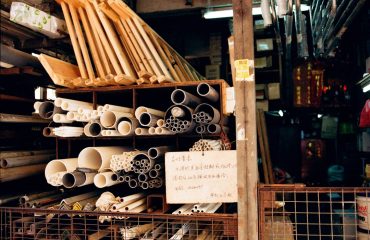Steel bridges, marvels of engineering, grace our landscapes and facilitate transportation across rivers, valleys, and roadways. Their design is a complex process, requiring a meticulous blend of engineering principles, material science, and innovative problem-solving. This guide delves into the key stages of steel bridge design, offering a comprehensive overview for both enthusiasts and professionals.
1. Initial Conceptualization and Site Analysis
The journey of a steel bridge begins long before the first steel beam is fabricated. The initial phase involves a thorough site analysis, encompassing several critical aspects. This includes a detailed topographic survey to determine the exact location and terrain, geological investigations to assess soil conditions and potential foundation challenges, hydrological studies to understand water flow and potential flooding, and environmental impact assessments to minimize ecological disruption. Furthermore, this stage involves defining the bridge’s purpose – is it for vehicular traffic, pedestrian use, or a combination? The anticipated load capacity, including live loads (vehicles, pedestrians) and dead loads (the bridge’s own weight), must be meticulously calculated. Preliminary design concepts are then developed, considering factors such as aesthetics, environmental integration, and the overall budget. This stage often involves the use of sophisticated software for 3D modeling and preliminary stress analysis.
2. Structural Design and Material Selection
Once the initial concept is approved, the detailed structural design commences. This phase involves choosing the most appropriate type of steel bridge – common types include beam bridges, truss bridges, arch bridges, and suspension bridges, each with its own strengths and weaknesses. The selection depends heavily on factors like span length, site conditions, and aesthetic considerations. Detailed calculations are performed to determine the required cross-sectional dimensions of the steel members (beams, columns, etc.), ensuring they can withstand the anticipated loads while remaining within acceptable stress limits. Material selection is crucial; different grades of steel offer varying strength and ductility, influencing cost and performance. Advanced finite element analysis (FEA) software is extensively used to simulate real-world loading conditions and refine the design for optimal structural integrity and safety. This stage also involves the design of connections – the points where individual steel members are joined together. These connections are critical for transferring loads effectively and ensuring the overall stability of the bridge.
3. Detailing and Fabrication Drawings
With the structural design finalized, the next step is to create detailed fabrication drawings. These drawings provide precise instructions to the fabricators, outlining every aspect of the steel members, including dimensions, material specifications, and connection details. This process is highly meticulous, demanding precision and accuracy to ensure that the fabricated components fit together seamlessly during construction. The drawings typically include detailed views, sections, and annotations, specifying welding procedures, bolt specifications, and surface treatments. This phase also involves the development of erection plans, outlining the step-by-step procedure for assembling the bridge on-site. Careful consideration is given to logistical aspects, such as transportation of the fabricated components to the construction site and the use of specialized equipment during erection.
4. Construction and Quality Control
The construction phase involves the fabrication of steel components in a controlled environment, followed by their transportation and erection at the bridge site. Rigorous quality control measures are implemented throughout this process. This includes regular inspections to ensure that the fabricated components conform to the design specifications and that welding procedures are properly executed. Non-destructive testing (NDT) techniques, such as ultrasonic testing and magnetic particle inspection, are employed to detect any internal flaws in the steel members. During erection, safety is paramount, with strict adherence to safety regulations and procedures. Specialized equipment, such as cranes and lifting devices, are used to carefully position and connect the steel components. Regular inspections are conducted throughout the construction process to ensure that the bridge is being built according to the design and that safety standards are maintained. This phase also involves the construction of the bridge’s foundation, which is crucial for transferring the bridge’s weight to the underlying soil or rock.
5. Testing and Commissioning
Once the bridge is constructed, a series of tests are conducted to verify its structural integrity and performance. These tests may include static load tests, where known loads are applied to the bridge to measure its deflection and stress levels. Dynamic load tests may also be conducted to simulate the effects of moving vehicles or wind loads. The results of these tests are compared to the design predictions to ensure that the bridge meets the required performance criteria. Instrumentation may be installed to monitor the bridge’s behavior under service loads. After successful completion of the testing phase, the bridge is commissioned and opened to traffic. Regular inspections and maintenance are crucial throughout the bridge’s service life to ensure its continued safety and functionality. This includes visual inspections, routine maintenance, and periodic load tests to detect any signs of deterioration or damage.
Designing a steel bridge is a multidisciplinary endeavor, demanding expertise in structural engineering, materials science, construction management, and project planning. The process involves meticulous planning, precise calculations, and rigorous quality control to ensure the creation of a safe, durable, and aesthetically pleasing structure that will serve its purpose for many years to come.
SEO Tags:
Steel Bridge Design, Bridge Engineering, Structural Steel Design, Steel Bridge Construction, Civil Engineering




